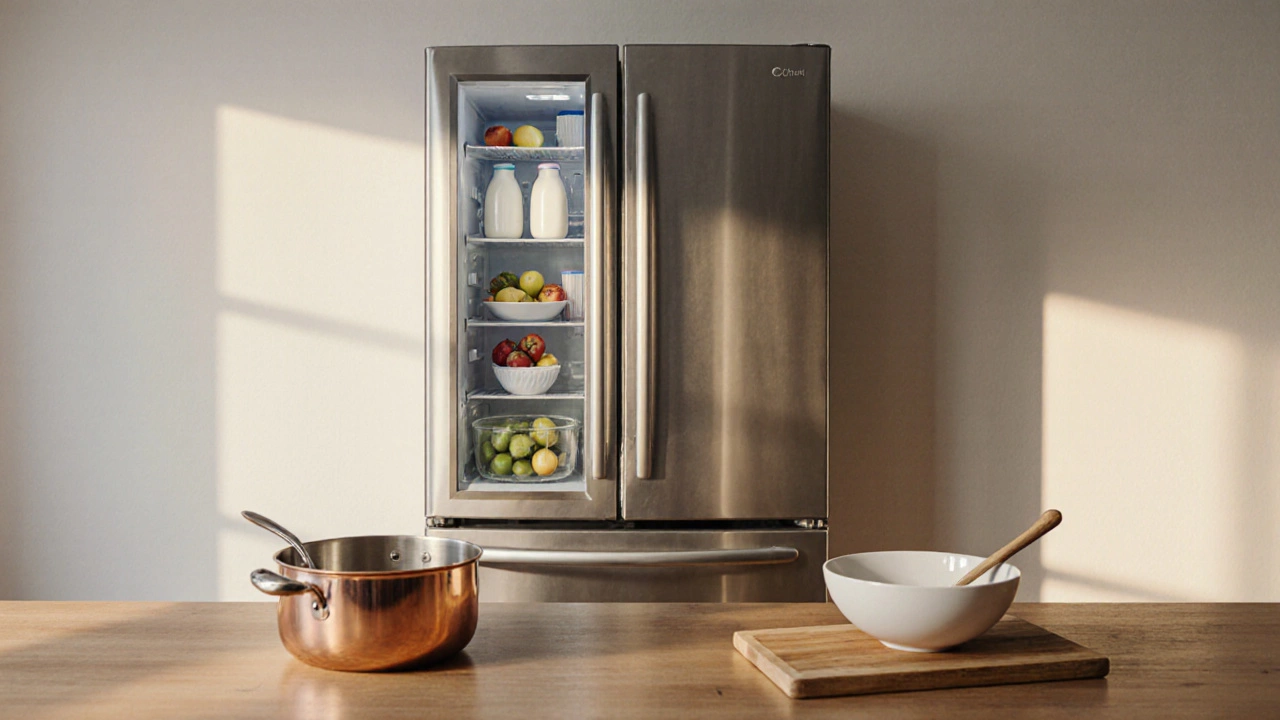When working with Kitchen Appliances, devices that help you cook, store, or prepare food. Also known as cooking appliances, they pair well with Cooking Utensils, hand tools such as spatulas, knives, and whisks and Flat Pans, shallow cookware used for frying or sautéing.
Think of kitchen appliances as the muscle of your kitchen. They range from massive built‑in ovens that bake whole meals to tiny countertop blenders that whip up smoothies in seconds. The main attributes you’ll see are type (refrigerator, toaster, coffee maker), power source (electric, gas), and size (full‑size, compact, portable). Knowing these helps you match an appliance to your space, budget, and cooking style. For example, a compact air fryer (type: small appliance, power: electric, size: countertop) can replace a deep‑fat fryer and free up cabinet space.
Big appliances like fridges, ovens, and dishwashers form the backbone of any kitchen. They usually require dedicated wiring or plumbing and are meant to stay put for years. Small appliances — think toasters, kettles, mixers — are designed for quick swaps and often sit on the counter. Then there are specialty gadgets such as sous‑vide circulators, espresso machines, and smart ovens that blend tech with cooking. Each category interacts with cooking utensils: a mixer works hand‑in‑hand with a whisk attachment, while a food processor teams up with a chopping blade. Flat pans sit on top of these appliances, receiving heat from a stove or an induction cooktop to finish the job.
Choosing the right appliance starts with a clear picture of how you cook. If you love fast meals, a microwave with a crisp function can replace a conventional oven for many dishes. If baking is your thing, a convection oven with multiple racks and a built‑in steam option offers better results than a basic toaster oven. Energy efficiency is another attribute that matters; look for the EU energy label or a high‑efficiency rating to keep electricity bills down. Maintenance is an often‑overlooked factor – removable filters, self‑cleaning cycles, and easy‑access panels can save you time and hassle.
All the items above connect back to the everyday tools you already own. Your flat pan will perform differently on an induction cooktop versus a gas flame, and the same pan can be used with a portable electric burner when you need extra cooking space. Likewise, a set of sturdy cooking utensils will last longer when paired with reliable appliances that don’t overheat or vibrate excessively. By treating appliances, utensils, and cookware as a team, you can create a kitchen that’s both efficient and enjoyable.
Below you’ll find a curated collection of articles that dive deeper into each of these topics. From detailed guides on selecting the perfect flat pan to tips on maintaining your small appliances, the posts are designed to give you actionable advice you can use right away. Keep reading to discover practical insights, buying checklists, and expert tricks that will help you build a kitchen that works for you.

Explore whether a refrigerator belongs to kitchenware, understand the difference between appliances and kitchen tools, and learn how the classification impacts insurance, moving, and design.
